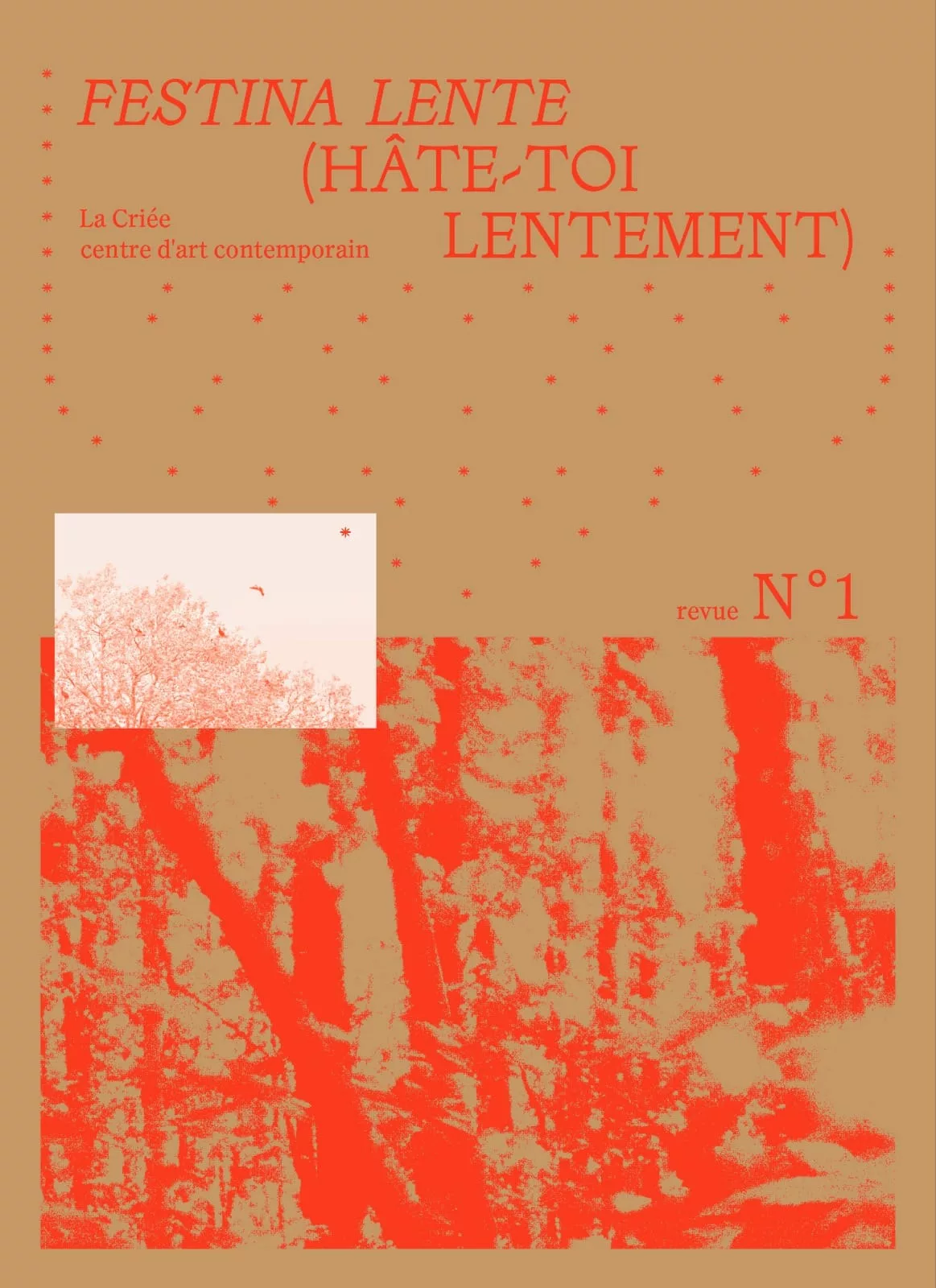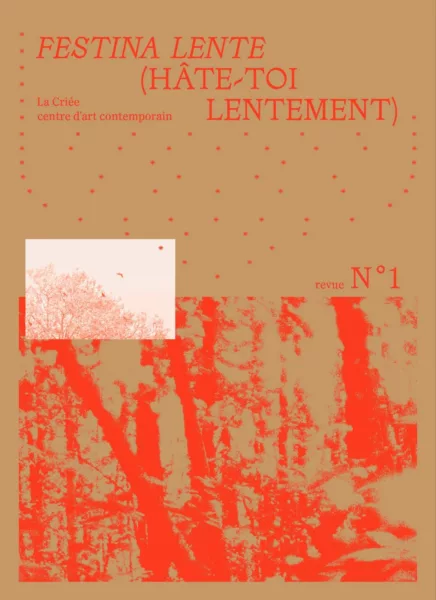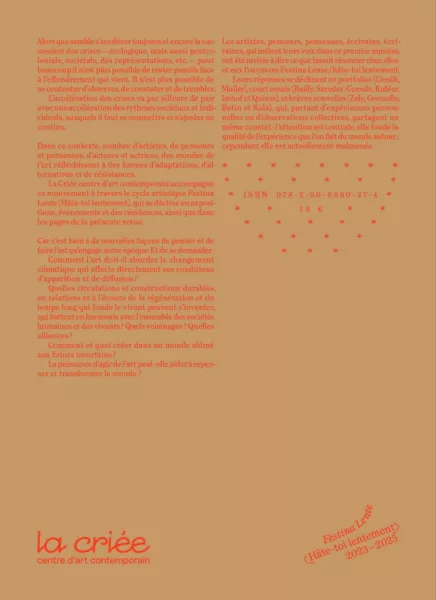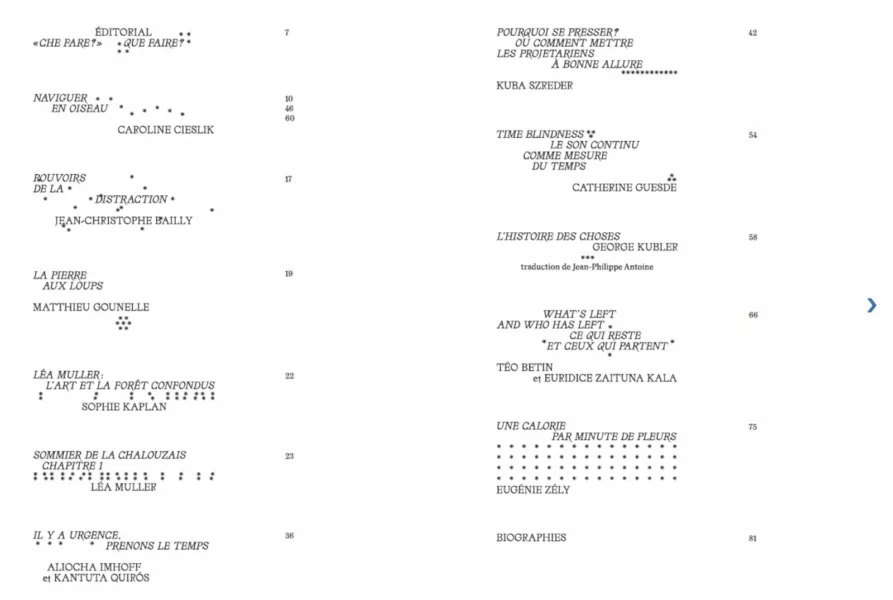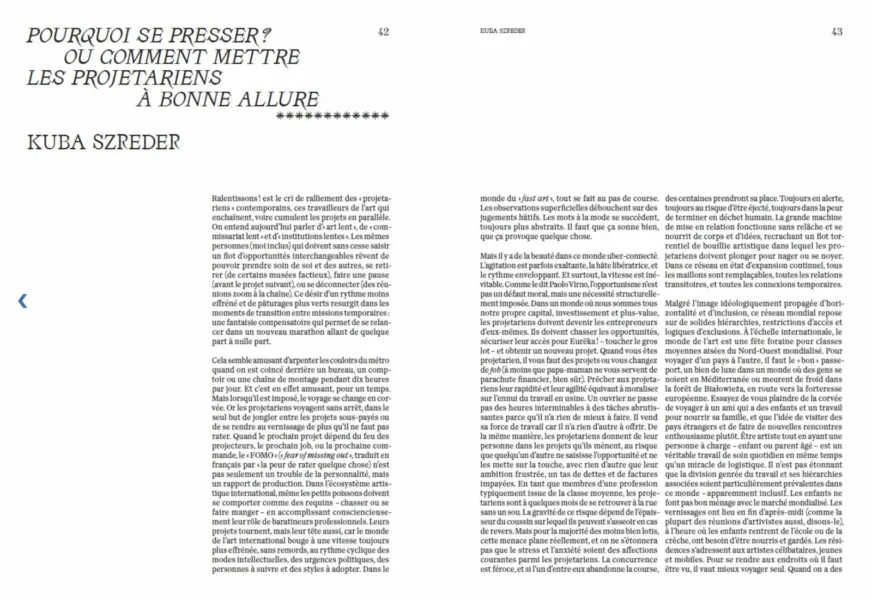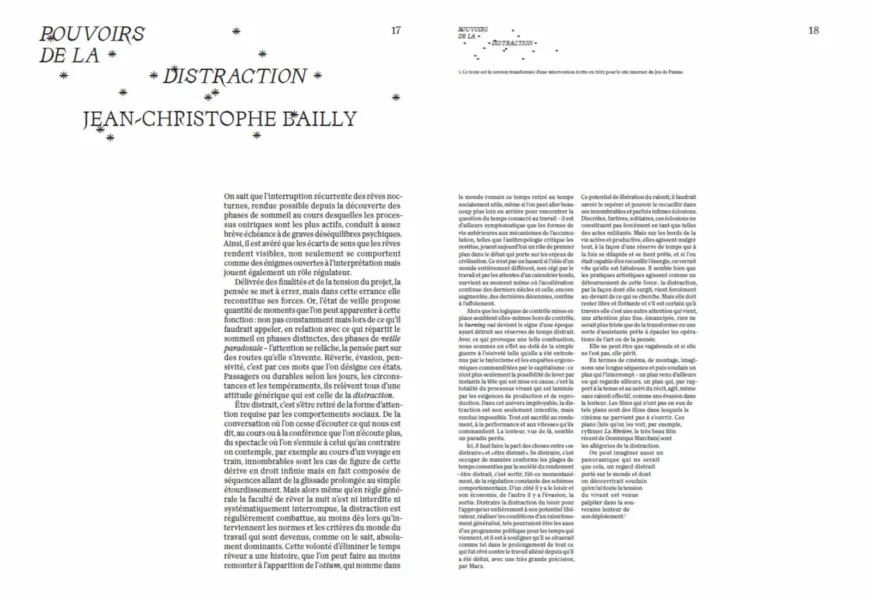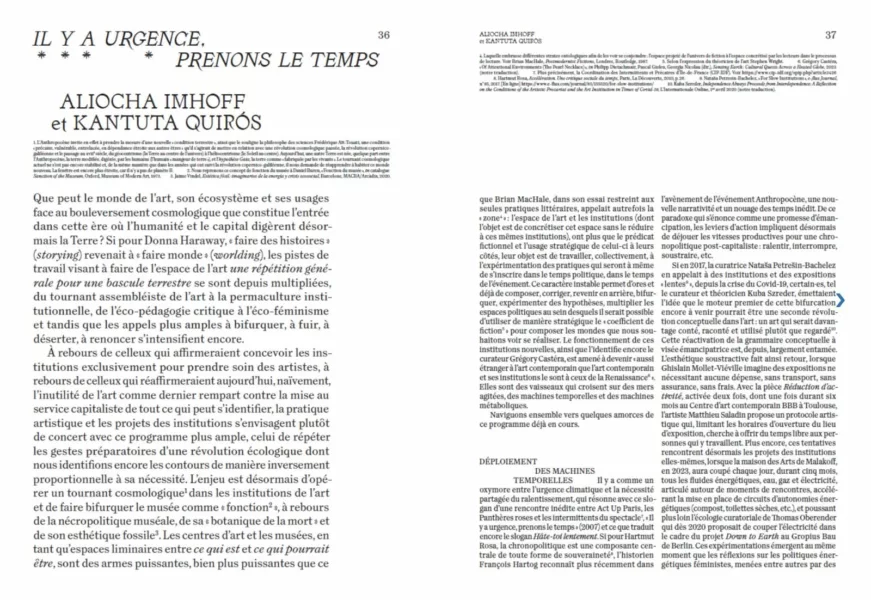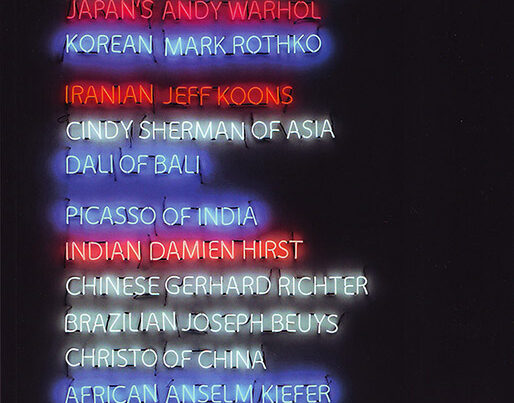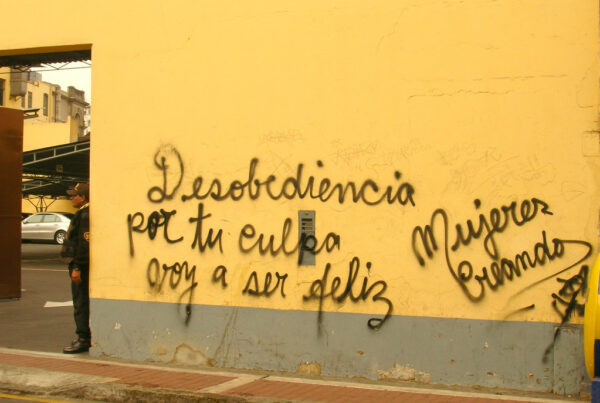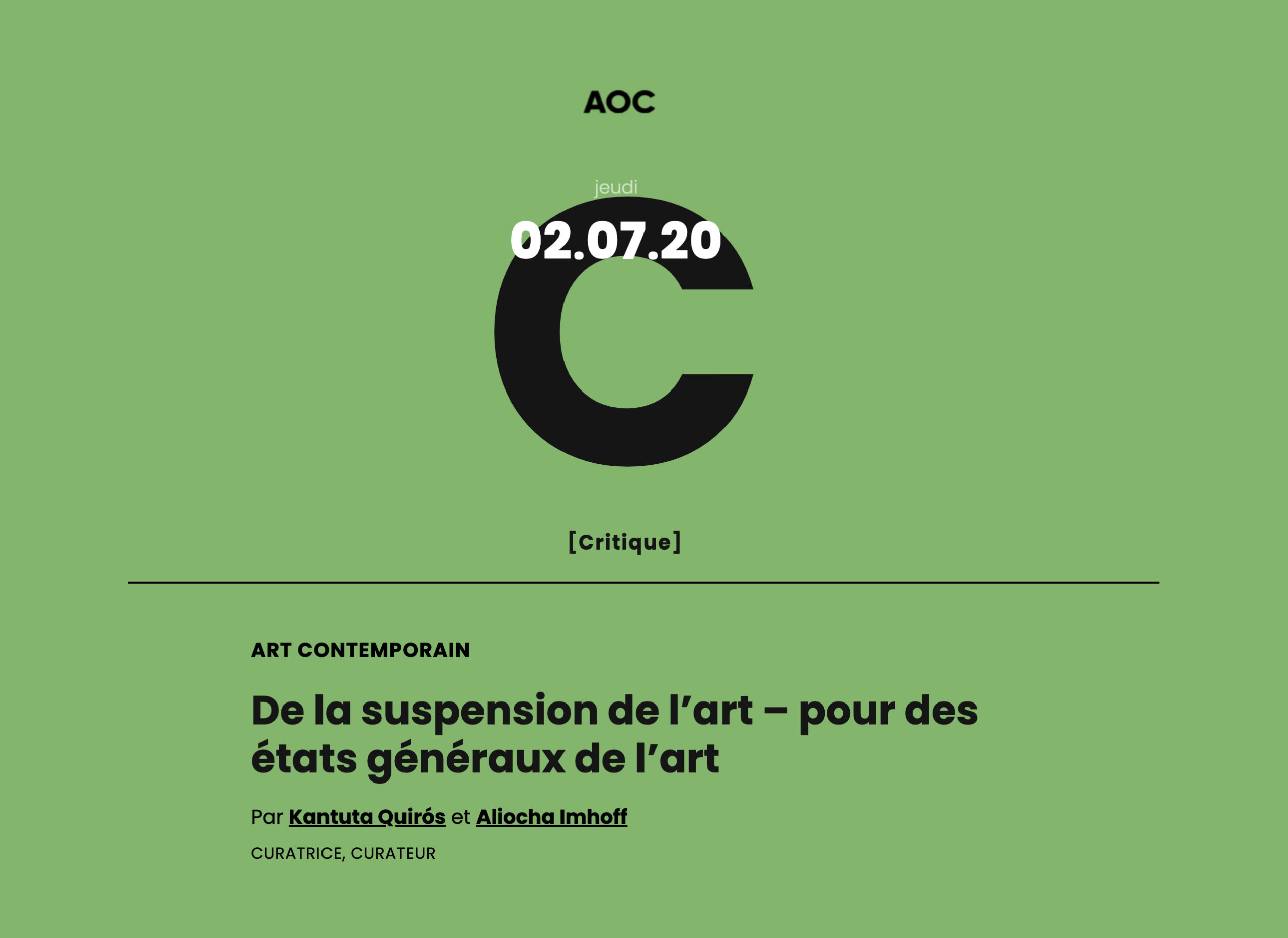Aliocha Imhoff & Kantuta Quirós have published an article entitled “There’s an emergency, we need to take the time”, on the necessary ecological bifurcations in the art world, in the first issue of Festina Lente, review published by the art center La Criée.
Review Festina Lente n°1
(Hurry slowly)
At a time when the succession of crises – ecological, postcolonial, societal, of representations, etc. – seems to be accelerating again and again, for many it is no longer possible to remain passive in the face of the coming collapse. -For many, it is no longer possible to remain passive in the face of the coming collapse. It is no longer possible to simply observe, observe and tremble.
The acceleration of crises goes hand in hand with an acceleration of societal and individual rhythms, to which we must submit and adjust continuously.
Against this backdrop, many artists, actors and thinkers in the art world are reflecting on forms of adaptation, alternative and resistance.
La Criée center d’art contemporain accompanies this movement through the Festina Lente (Haste yourself slowly) artistic cycle, which includes exhibitions, events and residencies, as well as in the pages of this magazine.
For our times call for new ways of thinking and making art.
And to ask ourselves:
How should art approach climate change, which directly affects the conditions in which it appears and is disseminated?
What sustainable forms of circulation and construction can be invented, in tune with regeneration and the long timeframes that underpin the living world, and in harmony with the whole of human society and the living world? What neighborhoods? What alliances?
How and what can we create in a damaged world with an uncertain future?
Can art’s power to act help rethink and transform the world?
The artists, thinkers and writers who combine their voices in this first issue were invited to say what the oxymoron Festina Lente / hasten slowly resonates with them. Their responses take the form of portfolios (Cieslik, Muller), short essays (Bailly, Szreder, Guesde, Kubler, Imhof and Quiros), and short stories (Zely, Gounelle, Betin and Kala), which, starting from personal experiences or collective observations, share a common observation: attention is central, it underpins the quality of our experience of the world around us; yet it is currently being abused.
The graphic project
The layout of this issue is designed in a nod to the work of Aldus Manutius, the 15th-century Italian humanist printer who created the first italics and marked his works with the adage Festina Lente, in the graphic form of a dolphin (Festina) winding around an anchor (Lente). In this publishing object, the typographic revival of a 15th-century typeface, the use of end-of-title texts and the play of asterisks in title compositions are graphic reinterpretations of his work. The motto also resonates in the multiple rhythms that run through the magazine. From article to article, the alternation of different bodies of text creates an ever-changing reading cadence, front and back, inviting readers to hasten slowly through the pages.
